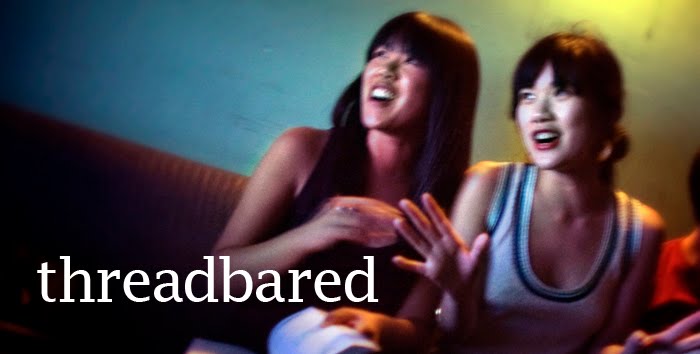 As Stanley Kowalski tells Blanche DuBois in A Streetcar Named Desire, "We've had this date with each other from the beginning." And so it is with us and this specific post on the what and why of the fashion and style blog.
As Stanley Kowalski tells Blanche DuBois in A Streetcar Named Desire, "We've had this date with each other from the beginning." And so it is with us and this specific post on the what and why of the fashion and style blog.Even before we began threadbared in 2007, we wondered why everyone (it seemed, to us) had a fashion and/or style blog. Diane Pernet, renowned fashion icon, designer, and photographer, has a blog. But so too does Valerie Steele, the prolific fashion historian and Director of the Museum at the Fashion Institute of Technology, and 13 year-old Tavi Gevinson, a veteran in the fashion blogosphere and a fixture at New York Fashion Week. Among the regular staff at major news companies including The New York Times, The Washington Post, The Chicago Tribune, and The Wall Street Journal is a fashion blogger - or two. (Robin Givhan of Washington Post is a Pulitzer Prize winner.) The prevalence of Asian fashion and style bloggers in the U.S., the U.K., Australia, and Asia (that continent of over 4 billion people and more than 2100 languages) also did not escape our notice.*
We have ruminated privately and informally on the fashion/style blogging phenomenon--its trends, effects, and problems--even while posting about the moralism of anti-counterfeit discourses, the cultural politics and colonial histories of fashion photography and fashion editorials, postcolonial aesthetics in Africa, racial-sartorial profiling in the US, and our divergent but equally impassioned modes of consumerism and sartorial philosophies.
But right now is a particularly opportune time to consider what is really going on with fashion and style blogging. In the last few weeks, we have seen the anticipation levels for one fashion blogger's book tour rise to rock concert pitch (namely, Scott Schuman's for the print version of The Sartorialist); the release of London-based Sketchbook Magazine's inaugural issue (a double issue on "The Fashion Blogger") with Susie "Style Bubble" Lau as its cover girl; and numerous "Best of" lists for fashion and style blogs compiled by media giants like Telegraph and The Chicago Sun-Times as well as by peer fashion/style bloggers such as FashionHippo and The Sunday Best. Fashion/style blogging seems to be having a moment but what kind of moment is it? In this three-part series called On the Fashion/Style Blog (OF/SB), we explore fashion blogging--what it is, what it was, and what it might be.
Click here for OF/SB, part I: Going Postal
Click here for OF/SB, part II: Blog in the Machine of Democracy
Click here for OF/SB, part III: Blog Ambition
* The question about the prevalence of Asian fashion/style bloggers is a complicated one that surely deserves its own post and requires much more research. However, one answer might begin with our good friend and super-smart colleague Thuy Linh Nguyen Tu's theory of the incidence of Asian Americans as fashion designers. In her forthcoming book, The Beautiful Generation: Asian Americans, Fashion Design, and the Cultural Economy of Asian Chic, she persuasively argues that Asian American designers are embedded within a "broader history of labor and migration."
An excerpt from her manuscript:
Without those crucial experiences and social connections [forged in fashion school], designers lacking a formal education have had to rely on other paths of skills acquisition and social networking. For many Asian Americans the knowledges passed around and handed down [from parents, who often worked on the lowest rungs of the clothing industry] were at least in the beginning quite crucial, for it fostered in them a sense of ease and familiarity with the craft of fashion that made it possible for them to experiment with its forms even while, Tu incisively notes, this education was . . . a part of a larger effort to situate women appropriately with the family and the state--not to enable them to pursue creative interests or entrepreneurial profits.
Without more quantitative data and ethnographic research (e.g., are there really a disproportionately larger number of Asian fashion/style bloggers? how are we defining "Asian"?), Tu's answer helps to contextualize some of the roots and routes of Asians in fashion.



